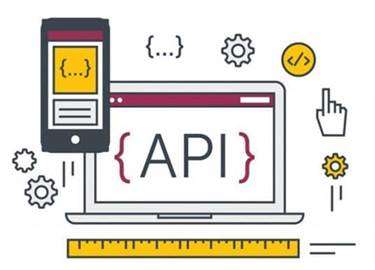State Diagrams Defined: A Visible Information To Complex Techniques
If the calendar shows availability, nonetheless, the appointment shall be added to the calendar. A behavior that outcomes when a state transitions, written above the transition arrow. A marker for the primary state in the course of, proven by a dark circle with a transition arrow.

Thus, totally different states are visited in sequence till the overflow happens. After the overflow the counter becomes zero once more, so the initial state is revisited within the state space, closing a cycle in the state house (assuming the counter was initialized to 0). Now think about the full case, when variables exist and are affected by the program commands being executed. Not only does the program counter change between different program counter places, but variables may additionally change values due to the commands executed. Consequently, even if we revisit some program command (e.g. in a loop), this doesn’t suggest this system is in the identical state. A state diagram is used in pc science and related fields to describe the conduct of systems.
Among these rich sets of (sometimes complex) mechanisms, maybe crucial feature is that orthogonal regions can coordinate their behaviors by sending occasion instances to every other. The concept of state variable (and classical FSM model) is that the value of the state variable absolutely defines the current state of the system at any given time. The concept of the state reduces the problem of figuring out the execution context within the code to testing just the state variable as a substitute of many variables, thus eliminating lots of conditional logic. Many software program methods are event-driven, which means that they repeatedly anticipate the incidence of some external or internal occasion such as a mouse click, a button press, a time tick, or an arrival of a data packet.
By following finest practices and using UML notation consistently, you’ll find a way to create effective state diagrams that improve the design and development of advanced systems. Readers will learn https://www.globalcloudteam.com/ to establish system behaviors, outline states, specify occasions and actions, and create transitions between states. The guide features a sensible instance of a traffic light system to illustrate these ideas.
State Diagram (state Machine Diagram Or Statechart Diagram)
They are particularly essential in modeling the conduct of an interface, class, or collaboration. State diagrams emphasize the event-ordered habits of an object, which is very helpful in modeling reactive systems. By using these parts in a state diagram, you’ll have the ability to mannequin the dynamic behavior of a system in a method that’s clear, concise, and simple to understand. State diagrams are a robust device for software engineers and other professionals who need to mannequin and analyze techniques with a finite number of states and state transitions. In general, any system that might be described when it comes to discrete states and state transitions may be modeled utilizing a state diagram.

Graphically, a state is rendered as a rectangle with rounded corners. An fascinating extension is to permit arcs to flow from any variety of states to any variety of states. This solely makes sense if the system is allowed to be in multiple states at once, which implies that a person state solely describes a situation or other partial side of the overall, international state.
Fundamental Components And Notations Of A State Machine Diagram
It represents the state of an object from the creation of an object until the item is destroyed or terminated. Analysis by hierarchical state decomposition can embody the appliance of the operation ‘exclusive-OR’ to any given state. For instance, if a system is in the “on” superstate (Figure 3), it could be the case that it’s also in either “operand1” substate OR the “operand2” substate OR the “opEntered” substate OR the “result” substate. This would result in description of the “on” superstate as an ‘OR-state’. You can include many alternative shapes in a state diagram, notably when you select to combine it with one other diagram.
Statechart diagrams are used to capture the changes in varied entities of the system from start to end. They are used to investigate how an occasion can set off change within a quantity of states of a system. It is outlined utilizing some condition or a statement throughout the classifier body.
To draw a state diagram in UML, one should determine all of the attainable states of any particular entity. However, the general case of mutual dependency, however, results in multiplicative complexity, so generally, the number of states wanted is the product k × l × m × …. States that include other states are referred to as composite states; conversely, states with out internal structure are referred to as simple states.

You’ve discovered what a State Machine Diagram is and the way to attract a State Machine Diagram. Get Visual Paradigm Community Edition, a free UML software, and create your personal State Machine Diagram with the free State Machine Diagram tool. Each transition line is labeled with the event that causes the transition. A state is a constraint or a scenario in the life cycle of an object, by which a constraint holds, the object executes an exercise or waits for an event.
What Is A State Diagram (state Machine Diagram Or Statechart Diagram)?
Read this blog submit to dive deeper into the various types of UML diagrams. Following state diagram example chart represents the person authentication process. A transition is a change in one state into another state which is occurred because of some occasion. Depending upon the outcomes of an evaluated guard condition, a new path is taken for program execution. This website is utilizing a safety service to guard itself from on-line assaults. There are a quantity of actions that would trigger this block including submitting a certain word or phrase, a SQL command or malformed data.

A state diagram in UML (Unified Modeling Language) is a graphical representation of the varied states that an object or system could be in and the transitions between those states in response to occasions or conditions. State diagrams are used to model the behavior of objects or systems over time. They are notably useful for representing complicated methods, software purposes, and control systems. However, within the general case of supply and goal states nested at different ranges of the state hierarchy, it may not be immediately obvious how many ranges of nesting have to be exited. As the name signifies, the LCA is the bottom composite state that is concurrently a superstate (ancestor) of both the source and the target states.
Strive To Draw Uml State Machine Diagram Now
Entry and exit actions permit implementation of desired conduct in a safer, easier, and more intuitive method. As proven in Figure 5, it could be specified that the exit motion from “heating” disables the heater, the entry action to “door_open” lights up the oven lamp, and the exit motion from “door_open” extinguishes the lamp. The use of entry and exit actions is preferable to putting an motion on a transition as a outcome of it avoids repetitive coding and improves operate by eliminating a safety hazard; (heater on whereas door open). The semantics of exit actions guarantees that, regardless of the transition path, the heater shall be disabled when the toaster isn’t within the “heating” state. In most real-life conditions, orthogonal areas can be only approximately orthogonal (i.e. not actually independent). Therefore, UML statecharts present numerous methods for orthogonal regions to speak and synchronize their behaviors.
The purpose of these UML diagrams is to represent states of a system. All the essential object, states, and the events that trigger changes within the states must be analyzed first before implementing the diagram. UML State machine diagrams can be utilized what is a state diagram to mannequin the behavior of a class, a subsystem, a package, or even an entire system. In the top row, you see the case of the principle supply containing the main target.
State Machine Diagram Vs Flowchart
Finally, always keep in mind that the key to mastering state diagrams lies in apply and continuous learning. Leverage Creately’s customizable state diagram templates to hurry up the diagramming course of. These templates provide a great start line and may be tailored to swimsuit your specific needs. An preliminary state, shown as a solid circle, marks the place to begin of the state machine. Conversely, a last state, depicted as a circle with a double border, indicates the place the state machine ceases operations. A self transition is a transition where the initial and the final state are the identical.
State Diagram Examples
The energy of state diagrams lies of their ability to seize the complexity of a system’s behavior in a easy, visual means, making them a useful tool for system modeling and evaluation. A state diagram maps out the state transitions an object undergoes in response to exterior or inner occasions. It’s pivotal in system modeling to visualize possible states and how an object transitions from one state to a different. The main elements of a state diagram include states, transitions, and occasions. Initial and ultimate states are specially marked to indicate the beginning and finish of the state course of.
It shows the assorted states that the clock could be in and the transitions that happen when the user interacts with the clock. By following these steps, you can develop a state diagram that precisely fashions the behavior of a system and helps you better perceive the problem at hand. Remember to keep the diagram clear and concise, and to hunt feedback from others to make sure that the mannequin precisely represents the system. Finally, evaluate your diagram to ensure that it precisely represents the system dynamics and that all transitions and states are correctly depicted.
In the case of orthogonal areas the place one orthogonal area defers an occasion and another consumes the occasion, the patron takes precedence and the occasion is consumed and never deferred. Entering the goal state configuration commences from the extent where the exit actions left off (i.e., from contained in the LCA). As described earlier than, entry actions should be executed starting from the highest-level state down the state hierarchy to the main target state. If the primary target state is composite, the UML semantics prescribes to “drill” into its submachine recursively using the native preliminary transitions.
State machine diagrams can even show how an entity responds to various occasions by changing from one state to a different. State machine diagram is a UML diagram used to model the dynamic nature of a system. In State Machines the vertices characterize states of an object in a class and edges symbolize occurrences of occasions. A State Machine Diagrams shows the potential states of the object and the transitions that cause a change in state. A state diagram consists of states, transitions, occasions, and actions.

